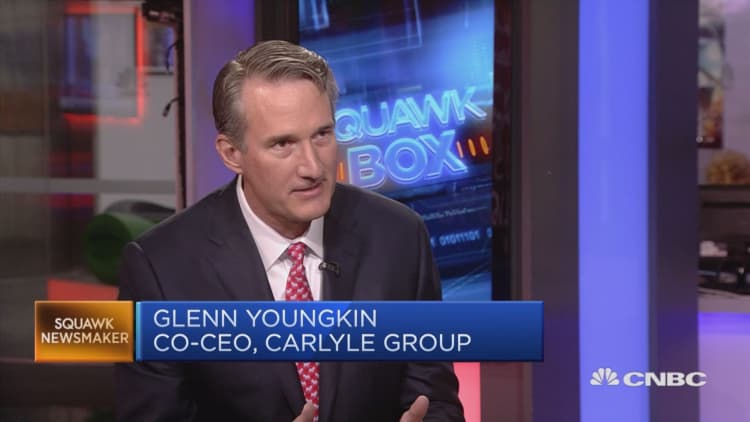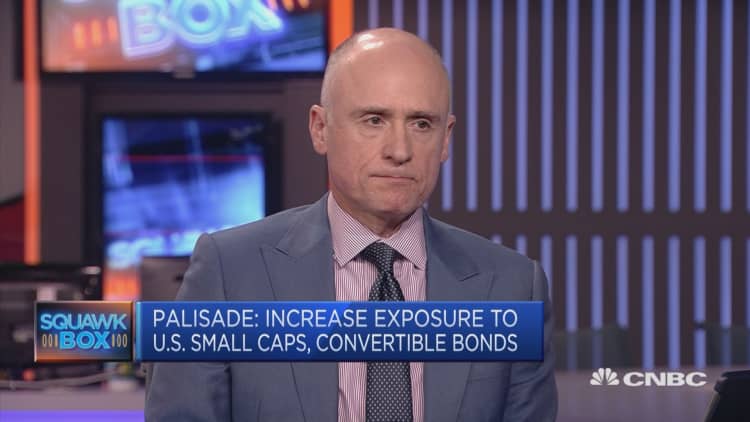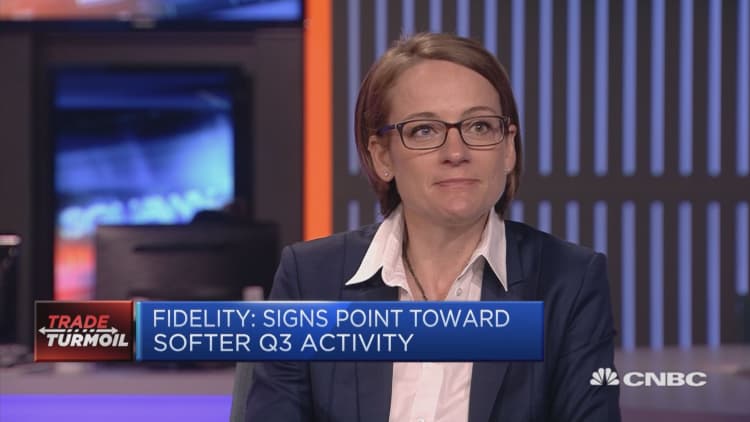
When Federal Reserve Chair Jerome Powell testifies on Capitol Hill this week, investors will be looking for clues as to how issues like escalating trade tensions could alter the U.S. economy and therefore the Fed’s interest rate path.
Investors have also been watching another metric: the yield curve, which is flattening, with the gap between yields on the 10 and two-year U.S. Treasury bonds hitting a fresh 11-year low. Could this be the bond market sounding the alarm on the economy?
Some market watchers are concerned. Typically, a flattening or inverting yield curve — when longer-term yields fall at a faster pace than shorter-term yields — means that the market believes that the Fed will cut short its rate-hiking cycle because of a weakened economy. This has in the past foreshadowed economic slowdown and even recession.
On Monday, Minneapolis Fed President Neel Kashkari wrote in a blog post that is was time to pause rate hikes, citing the curve, warning that continued rate rises could lead it to invert and slam the breaks on the economy.
“Over the past 2.5 years, as the Federal Reserve has raised short-term interest rates, the yield curve has flattened dramatically, with the difference between 10-year and two-year Treasuries down from 134 basis points in December 2016 to 25 basis points today, a 10-year low,” Kashkari said.
But numerous investors are saying that this time it’s different.
Focusing on the yield curve 'a mistake'
Focusing on the flatness of the yield curve right now is a mistake, according to Dan Veru, chief investment officer at Palisades Capital Management. The U.S. economy still has plenty of steam, he said.
“You have to look at the shape of the yield curve right now, which I think is just putting investors on edge that the economy could be de-accelerating when, in fact, it really isn’t,” Veru told CNBC’s “Squawk Box Europe” on Monday. “It’s doing the exact opposite. A lot of this has to do with some technical issues around tax policy changes that occurred in the U.S.”

Veru explained that the tax cuts have stimulated revenue and capital flows into the U.S., and that repatriation is requiring US companies to finance less through commercial paper markets and other short-term instruments, “creating some near-term distortions in the shape of the yield curve.”
Carlyle Group co-Chief Executive Officer Glenn Youngkin similarly dismissed yield curve woes.
“The U.S. economy is stronger than people think,” said Youngkin, whose private equity firm oversees more than $200 billion in assets under management. Carlyle predicted U.S. gross domestic product (GDP) growth of 4 percent in the second quarter as well as two more interest rate hikes this year, adding that the central bank would be more discerning about tightening in 2019 as the economic cycle continues.
Youngkin cited strong retail sales, strengthened industrial production amid continuing recovery, higher capital goods orders and improved consumer health as driving the strong American economy.
Standout performer — but for how long?
Kathleen Brooks, research director at Capital Index, agreed that while the direction of the curve does normally herald a slowdown, the economic picture was positive enough to brush off near-term fears.
“At this stage, when the U.S. economy is doing very well, the market can ignore the warning signs from the inverted yield curve and concentrate on the good news story: potentially lower interest rates in future,” she wrote in a client email Monday.

But while investors across the board acknowledge the positive macro picture, many are questioning how long it can last — particularly with mounting debt, trade war concerns and tightening liquidity late in the economic cycle.
“I think it’s surprising right now that the U.S. is the standout in a global context; you have to wonder when this can continue in isolation,” said Sonja Laud, head of equity at Fidelity International, noting early signs of weakening in China and softening in Europe.
This is largely due, as Veru noted, to the Donald Trump administration’s fiscal stimulus in what many believe is the last phase of the cycle. But while there is no significant shock yet to negate momentum, signs point to softer activity the third quarter of the year, Laud said.
Meanwhile, there is increasing scrutiny and inward focus coming from the Fed, she added, which is a sign that the outlook may not stay so rosy — something that would have repercussions far beyond the U.S.
“My worry is about global dollar liquidity and the liquidity picture in total, because next to the interest rate hikes, we have to understand what they are going to do to the balance sheet,” Laud said, noting the impact this has on emerging markets in particular. Tightening liquidity alongside rising Treasury issuance — on top of already high borrowing and debt — “naturally sucks dollar liquidity back in the country.”


